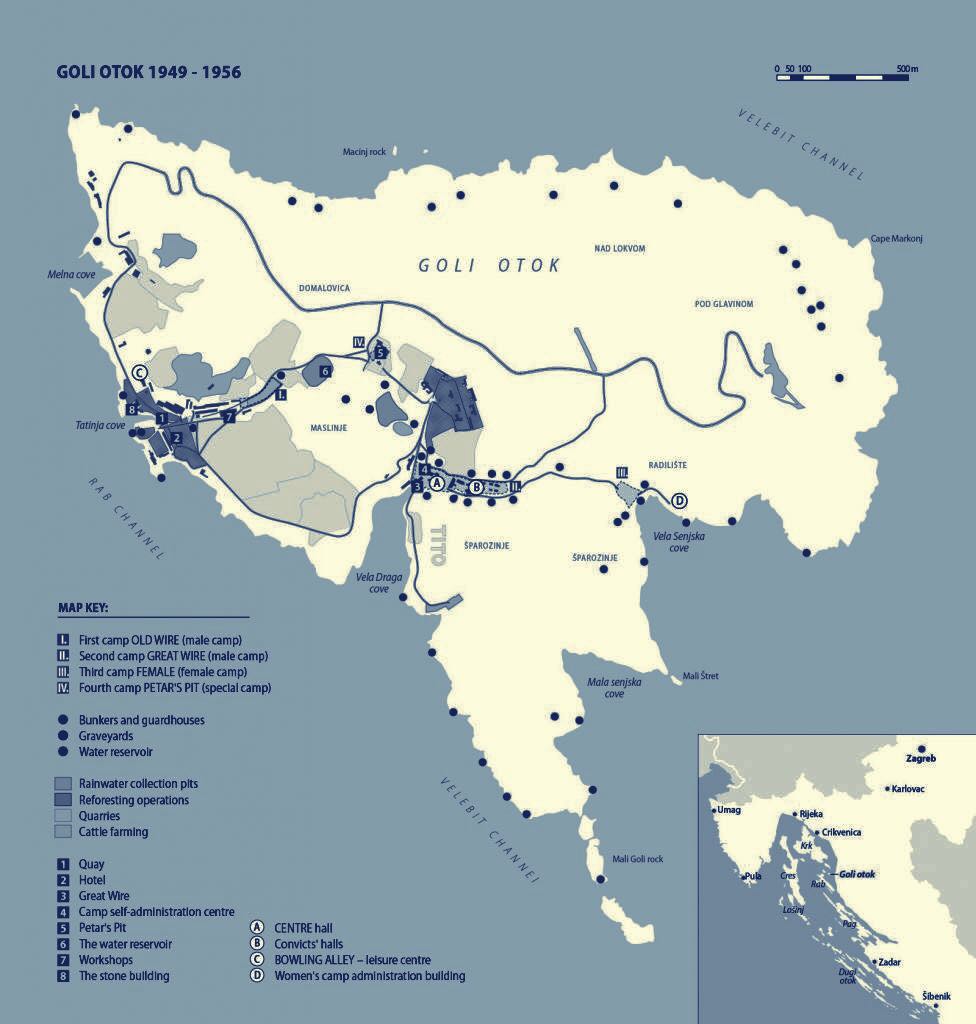GOLI OTOK

Location/Topography
Goli Otok is a small island off the west coast of Croatia and lies in the shadows of Mount Velebit. The largest mountain range in Croatia, Mount Velebit is known for causing cold, strong winds across much of the western coast. These brutal winds prohibit lush vegetation from growing; Goli Otok translates to “barren island” and this made it the perfect location for a gulag during the Communist regime.
Exile History

Before the gulag was built in 1948, there was nothing on Goli Otok save for rocks and shrubs. The gulag housed a variety of prisoners, from Russian POWs, to those loyal to the Soviet Union, to intellectuals, to petty criminals. As in all gulags, life and guards were not kind to prisoners; the typical punishment was to break rocks from one side of the island and move them to the other, for no reason other than to dole out physical punishment.
After Stalin's death in 1953, there was a transfer of power of the prison from the Yugoslavian federal government to the local Croatian government. A few years later, the gulag became a regular jail and in 1988, it closed for good. Today, many of the buildings are still standing, though the bura has taken its toll. Propaganda is still visible and new graffiti covers exposed walls. There have been no efforts to preserve the site over the years, though people want to find ways to commemorate the victims of the prison.
First-Hand Accounts
The majority of the prisoners on the island survived and have since written memoirs about their time in exile on the island. It is evident that this gulag put a massive strain on the entire region and now, there is no one who does not have a link in some way to those persecuted at the island. A local describes Goli Otok as being a desolate place with poor conditions, horrific guards and a lot of meaningless hard work.